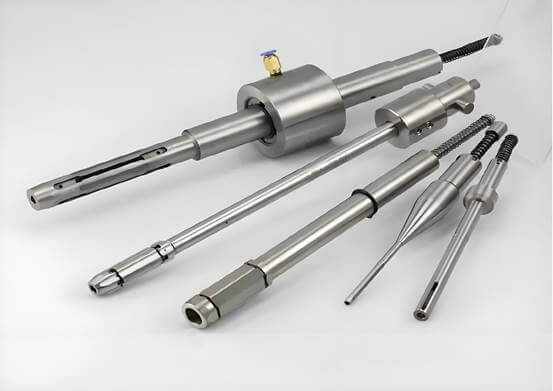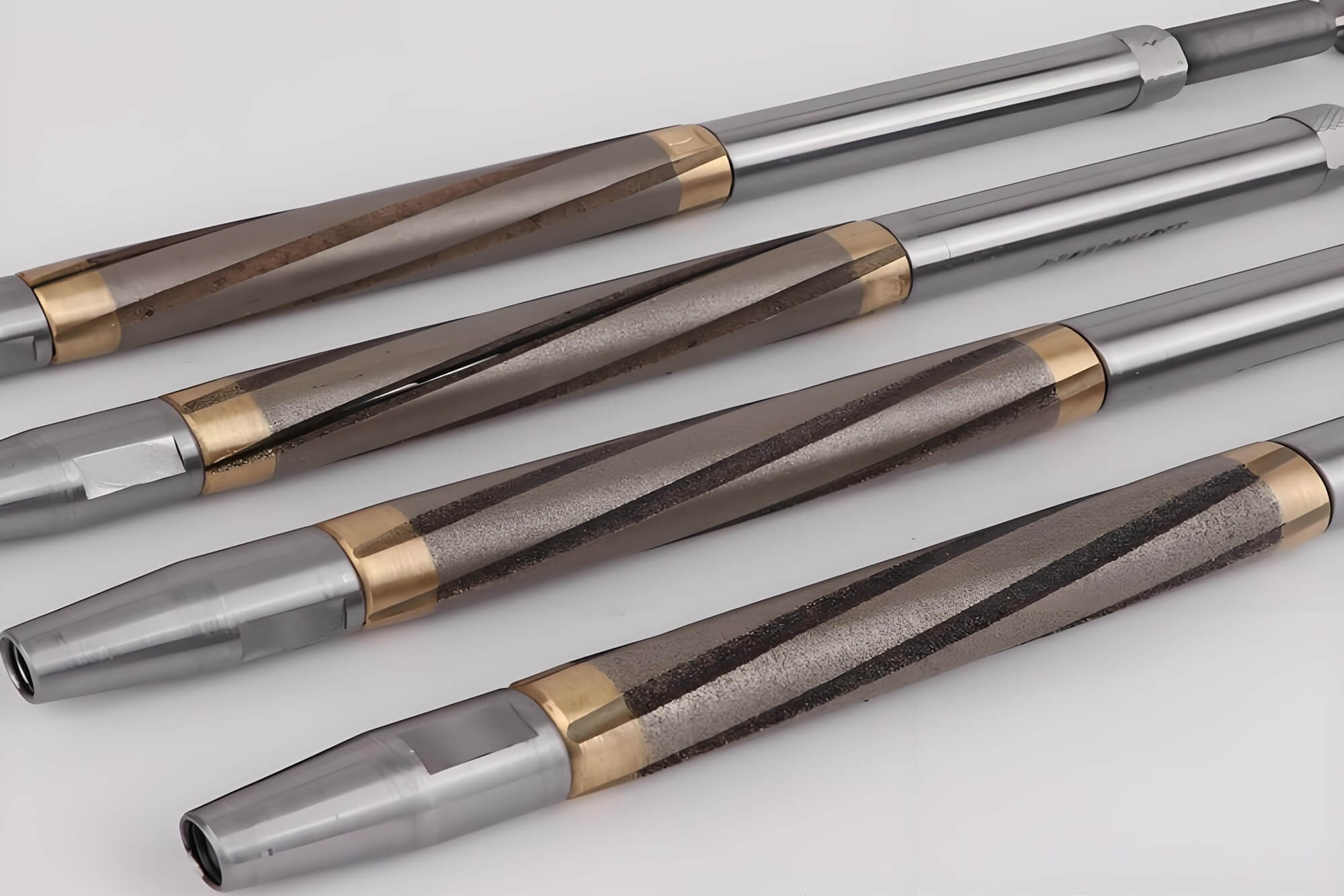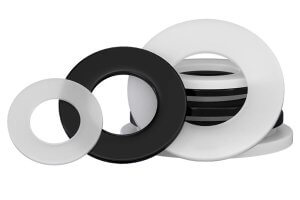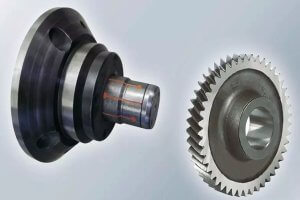In the dynamic world of Computer Numerical Control (CNC) machining, achieving precise dimensions and impeccable surface characteristics is as critical as primary shaping operations. While processes like boring and reaming establish a hole’s basic geometry, they are merely the foundation for true precision. The honing tool, far from a simple finishing implement, is a sophisticated system engineered to perfect bore geometry, size, and surface finish to levels unattainable by most other methods. This comprehensive guide explores the honing tool’s pivotal role in modern CNC environments, delving into its principles, anatomy, techniques, and seamless integration into advanced workflows. We also provide in-depth insights into abrasive selection, troubleshooting honing tool defects, and the transformative future of honing tools in the era of Industry 4.0.
Why the Honing Tool is Essential for Surface Perfection
The honing tool is the cornerstone of precision finishing in CNC machining, addressing the limitations of primary machining processes. Boring and reaming, while effective for creating holes, often leave geometric inaccuracies such as out-of-roundness, taper, or surface imperfections. The honing tool refines these bores with micron-level accuracy, ensuring they meet stringent tolerances and functional requirements for high-performance applications like automotive engines, aerospace actuators, and hydraulic systems.This guide serves as both a technical resource and a practical roadmap for machinists, engineers, and manufacturers. By understanding the honing tool’s capabilities, from its kinematic principles to its integration into CNC systems, professionals can optimize their processes for efficiency, quality, and cost-effectiveness. With detailed analyses, data-driven comparisons, and forward-looking trends, this article equips readers to harness the full potential of honing tools in modern manufacturing.
The Principles of Precision: How Honing Tools Achieve Excellence
Honing is a controlled abrasive machining process that refines a pre-machined surface to achieve exceptional geometric accuracy, dimensional control, and surface integrity. The honing tool, equipped with abrasive stones, is the heart of this process, delivering results that are critical for components in demanding industries.
Kinematics of the Honing Tool
At its core, the honing tool operates through a unique combination of two simultaneous motions: rotation and axial reciprocation. As the honing tool rotates within the bore, it also moves back and forth along the bore’s axis. This compound motion ensures that the abrasive stones engage the entire surface under precisely controlled pressure, removing microscopic amounts of material—often as little as 0.005 mm. The honing tool’s kinematics create a uniform cutting action, correcting imperfections and producing a polished, functional surface.
The honing tool’s ability to combine these motions distinguishes it from other machining processes. The rotational speed determines the cutting action, while the stroking speed influences the surface pattern. Together, they enable the honing tool to achieve unparalleled precision in bore refinement.
Core Objectives of Honing Tools
The honing tool serves three primary objectives, each critical to producing high-quality components:
- Geometric Accuracy: The honing tool corrects flaws such as out-of-roundness, taper, waviness, and axial straightness, ensuring the bore is a true cylinder. This is vital for components like hydraulic cylinders, where geometric precision ensures proper sealing and performance.
- Dimensional Control: With tolerances as tight as ±0.002 mm, the honing tool delivers micron-level accuracy, essential for applications like fuel injectors and precision bearings in aerospace systems.
- Surface Integrity: The honing tool removes stressed, amorphous metal layers left by aggressive machining, revealing the undisturbed base metal. This results in a smooth, durable surface that minimizes friction and extends component lifespan.
The Functional Cross-Hatch Pattern
A signature feature of the honing tool is the cross-hatch pattern it creates—a network of intersecting helical grooves resulting from its dual motions. The cross-hatch angle, determined by the ratio of the honing tool’s rotational and stroking speeds, is a critical parameter. Typically ranging from 20° to 60°, this angle is optimized for specific applications to ensure proper lubrication retention.
This pattern is not merely aesthetic; it is highly functional. The grooves act as reservoirs for lubricants, ensuring consistent oil distribution in components like piston rings and cylinder walls. In internal combustion engines, for example, the honing tool’s cross-hatch pattern reduces wear, enhances sealing, and improves engine efficiency.
Honing Tools in Context: A Comparative Analysis
To understand the honing tool’s unique role, it’s essential to compare it with other precision machining processes. The honing tool bridges the gap between high-material-removal processes like boring and grinding and ultra-fine finishing processes like lapping. The table below provides a detailed comparison:
| Process | Primary Goal | Material Removal Rate | Surface Finish (Ra) | Tool/Abrasive | Key Advantage | Typical Applications |
| Honing Tool | Correct geometry and create functional finish | Low to Medium (0.002–0.020 in) | 0.025–0.8 μm | Bonded abrasive stones (Diamond, CBN, SiC) | Minimal heat/stress; functional cross-hatch | Engine cylinders, hydraulic bores |
| Grinding | High-precision stock removal | High (0.010–0.050 in) | 0.2–1.6 μm | Grinding wheel | Fast, tight tolerances | Gears, shafts |
| Lapping | Ultra-fine finish and flatness | Very Low (<0.001 in) | <0.1 μm | Loose abrasive slurry | Mirror-like finishes | Optics, precision bearings |
| Boring | Enlarge hole to specific diameter | Very High (>0.050 in) | >1.6 μm | Single-point tool | Rapid material removal | Initial hole creation |
Table 1: Comparing the honing tool with grinding, lapping, and boring in CNC machining applications.The honing tool excels at correcting geometric errors with minimal thermal impact, making it ideal for high-precision components. Unlike grinding, which risks heat-induced stress, or lapping, which cannot address significant form errors, the honing tool delivers both geometric perfection and a functional surface finish.

Anatomy of a Honing Tool: Components and Functionality
The honing tool is a precision-engineered assembly designed to transmit CNC machine power to the workpiece with exceptional accuracy. Understanding its components is key to appreciating its performance.
Core Structure of the Honing Tool
The honing tool consists of several critical components:
- Spindle Nose Adaptor: Connects the honing tool to the CNC machine’s spindle, ensuring precise power transmission.
- Drive Shaft: Transmits rotational force to the hone body.
- Hone Body: Houses the mandrel, abrasive stones, and guide shoes, forming the honing tool’s active cutting system.
- Mandrel: A precision-ground component that positions the abrasive stones and guide shoes, customized for specific bore types (e.g., open, blind, or interrupted bores).
The honing tool’s modular design allows customization for diverse applications, ensuring versatility and precision.
Abrasive Stones: The Cutting Edge of Honing Tools
The abrasive stones, or “hones,” are the honing tool’s cutting elements, comprising abrasive grains bonded together. The choice of abrasive depends on the workpiece material:
- Conventional Abrasives:
- Superabrasives:
- Diamond: Used for hardened steels, ceramics, and aerospace alloys like Inconel, providing exceptional wear resistance.
- CBN (Cubic Boron Nitride): Perfect for high-volume production of hardened steel components, ensuring long honing tool life.
Precision Expansion Mechanism
The honing tool’s expansion system is critical for dimensional control. A tapered cone, connected to a push rod, is actuated by the CNC machine’s motor or hydraulic system. As the cone moves axially, it pushes the abrasive stones radially outward, applying precise pressure against the bore wall. For blind bores, adjustable cones compensate for uneven stone wear, preventing taper and ensuring uniform cutting with the honing tool.
Guide Shoes and Bushings
Guide shoes, typically made of hardened steel or carbide, stabilize the honing tool within the bore. They protect abrasive stones from chipping during entry and exit and prevent metal-to-metal contact with the finished surface. An external hone guide bushing aligns the honing tool at the start of the operation, ensuring accurate centering and consistent results.
The honing tool’s “floating” design, enabled by a double-jointed connection, allows it to self-align with the bore’s centerline. This self-centering action, combined with equalized pressure across multiple stones, enables the honing tool to correct out-of-roundness and straightness errors effectively.
Honing Tool Techniques: A Spectrum of Precision
The honing tool supports multiple techniques, each tailored to specific production requirements, from low-volume prototyping to high-throughput manufacturing.
Multi-Pass Honing Tools
Multi-pass honing tools involve multiple cycles of rotation and reciprocation, with abrasive stones gradually expanding to remove material (0.002–0.020 inches). This method is versatile, suitable for various bore sizes and lengths, and ideal for creating the functional cross-hatch pattern. Multi-pass honing tools are widely used in applications requiring significant stock removal and precise surface finishes, such as engine cylinders and hydraulic components.
Single-Pass Honing Tools
Single-pass honing tools, often featuring diamond or CBN-coated sleeves, pass through the bore once at a pre-set diameter. Used in high-volume production, these honing tools reduce cycle times by 40–70%, making them ideal for components like fuel injectors, valve guides, and connecting rods. However, their stock removal is limited, requiring precise pre-machining.
CNC vs. Manual Honing Tools
- Manual Honing Tools: Operated by skilled machinists, manual honing tools are cost-effective for prototypes and small runs. The operator’s “feel” allows subtle adjustments, preventing distortion in delicate parts.
- CNC Honing Tools: Automated honing tools control parameters like rotational speed, stroking speed, and expansion pressure via CNC systems. They ensure repeatability and incorporate in-process gauging for real-time diameter measurement, critical for industries like aerospace and automotive.
The shift to CNC honing tools reflects the demand for consistency and efficiency in high-volume production, while manual honing tools retain value for specialized applications.
Integrating Honing Tools into CNC Machining Centers
Modern manufacturing emphasizes process consolidation, and honing tools are now integrated into standard CNC machining centers, eliminating the need for standalone machines.
Advantages of Integrated Honing Tools
Integrating honing tools into CNC workflows offers significant benefits:
- Reduced Capital Costs: Eliminates the need for dedicated honing machines, lowering equipment investment.
- Process Consolidation: Performs boring, milling, and honing in one setup, reducing handling and setup times.
- Enhanced Accuracy: Maintains datum references, preserving positional accuracy that standalone honing tools cannot correct.
By mounting honing tools in the CNC machine’s spindle, manufacturers achieve “done-in-one” production, streamlining workflows and enhancing component quality.
Optimizing Honing Tool Parameters
CNC honing tools require precise parameter control:
- Rotational Speed (RPM): Affects cutting action and finish quality. Excessive speed risks glazing, where the honing tool’s stones stop cutting.
- Stroking Speed (Feed Rate): Influences cross-hatch angle, critical for lubrication retention.
- Expansion Pressure: Drives material removal. Incorrect pressure can distort thin-walled parts or cause slow cutting.
The Role of Coolants
Honing oil is essential for honing tool performance, serving three functions:
- Lubrication: Reduces friction between the honing tool’s stones and the workpiece.
- Cooling: Dissipates heat to prevent thermal distortion.
- Flushing: Removes swarf and abrasive particles, preventing honing tool loading and surface scratches.
A robust filtration system ensures clean fluid, maintaining honing tool efficiency and surface quality.

The Science of Abrasives: Optimizing Honing Tool Performance
Abrasive selection is the cornerstone of honing tool success, requiring careful matching of grain, bond, and grit size to the workpiece.
Abrasive Materials for Honing Tools
Diamond/CBN: Hardest abrasives, ideal for hardened steels, ceramics, and high-volume applications with single-pass honing tools.
Silicon Carbide (SiC): Sharp and effective for softer materials like aluminum and cast iron.
Aluminum Oxide (AlO): Versatile and cost-effective for unhardened steels.
Bond Types in Honing Tools
The bond holds abrasive grains, eroding to expose fresh cutting edges:
- Vitrified Bond: Rigid and porous, ideal for conventional abrasives in multi-pass honing tools.
- Resin Bond: Elastic, used for polishing with honing tools requiring gentle cutting.
- Metal Bond: Durable, paired with superabrasives for high-volume honing tool applications.
A softer bond is used for hard materials to prevent glazing, while a harder bond suits softer materials.
Grit Size Strategy
- Coarse (80–220): For roughing and geometric correction with honing tools.
- Medium to Fine (400–1500): For final finishing, achieving low Ra values.
The table below outlines abrasive selection for common workpiece materials:
| Workpiece Material | Recommended Abrasive | Bond Type | Grit Size | Honing Tool Application |
| Cast Iron | SiC | Vitrified | 120–400 | Multi-pass honing tool for engine cylinders |
| Hardened Steel | Diamond/CBN | Metal | 220–800 | Single-pass honing tool for fuel injectors |
| Aluminum | SiC | Vitrified | 150–600 | Multi-pass honing tool for automotive parts |
| Aerospace Alloys | Diamond | Metal | 400–1200 | CNC honing tool for actuator bores |
Table 2: Abrasive selection guide for optimizing honing tool performance across materials.
Troubleshooting Honing Tool Defects
Honing tool defects are predictable outcomes of misaligned parameters. The following table provides a comprehensive guide to diagnosing and correcting common issues:
| Defect | Description | Causes | Honing Tool Adjustments |
| Taper | Larger diameter at one end | Off-center stroke, uneven dwell | Adjust stroke for equal over-travel; verify honing tool alignment |
| Bellmouth | Flared ends | Long stroke, short stones | Shorten stroke; use longer honing tool stones |
| Barrel Shape | Oversized middle | Short stroke | Increase stroke; use longer honing tool stones |
| Out-of-Round | Elliptical bore | Excessive pressure, fixture distortion | Reduce pressure; check fixture; ensure proper honing tool size |
| Waviness | Axial waves | Short stones, existing bow | Use honing tool with stones 1.5× bore length |
| Scratches | Deep surface marks | Contaminated oil, abrasive pickup | Improve filtration; reduce pressure; use finer honing tool grit |
Table 3: Troubleshooting common honing tool defects in CNC machining.By adjusting honing tool parameters like stroke length, pressure, or stone length, machinists can eliminate defects and ensure consistent quality.
The Future of Honing Tools in Industry 4.0
The honing tool is poised for transformation with Industry 4.0 technologies, evolving into an intelligent, data-driven system.
IoT and Real-Time Monitoring
IoT sensors embedded in honing tools and machines monitor parameters like tool wear, spindle torque, vibration, and temperature. In-process pneumatic gauging measures bore diameter during the cycle, enabling real-time adjustments for consistent honing tool performance.
AI and Machine Learning
AI and ML analyze honing tool data to enable:
- Predictive Maintenance: Forecasts honing tool stone wear or machine failure, reducing downtime.
- Process Optimization: Recommends optimal honing tool parameters based on material and geometry, minimizing setup time and scrap.
Advanced Abrasives
New superabrasive grains and “smart” bonds enhance honing tool durability and efficiency, improving surface quality and reducing costs in high-volume production.
Case Studies: Honing Tools in Action
To illustrate the honing tool’s impact, consider these real-world applications:
- Automotive Industry: A leading manufacturer used single-pass honing tools to produce fuel injectors, reducing cycle times by 50% and achieving ±0.001 mm tolerances.
- Aerospace Sector: CNC honing tools with diamond abrasives refined actuator bores, ensuring zero defects in 10,000 parts, thanks to in-process gauging.
- Hydraulic Systems: Multi-pass honing tools corrected taper in long bores, improving seal performance and extending component life by 30%.
These examples highlight the honing tool’s versatility and precision across industries.
Practical Tips for Maximizing Honing Tool Performance
To optimize honing tool operations:
- Regular Maintenance: Inspect honing tool stones and guide shoes for wear to prevent defects.
- Parameter Calibration: Test honing tool settings on sample parts to fine-tune speeds and pressures.
- Coolant Management: Use high-quality honing oil and filtration systems to maintain honing tool efficiency.
- Operator Training: Ensure machinists understand honing tool kinematics and defect troubleshooting.
Conclusion
The honing tool is a cornerstone of precision CNC machining, delivering unmatched geometric accuracy, dimensional control, and functional surface finishes. From multi-pass to single-pass techniques, honing tools adapt to diverse production demands, while their integration into CNC machining centers streamlines workflows and enhances accuracy. By mastering abrasive selection, parameter optimization, and leveraging Industry 4.0 technologies, manufacturers can unlock the full potential of honing tools. As the industry evolves, honing tools will continue to drive manufacturing excellence, ensuring components meet the highest standards of performance and reliability. Invest in a precision honing tool to elevate your CNC capabilities today.
FAQ:
- What is a honing tool, and what does it do in CNC machining?
A honing tool is a precision instrument used in CNC machining to refine the geometry, size, and surface finish of internal bores. It combines rotational and reciprocating motions with abrasive stones to correct imperfections like out-of-roundness or taper, achieving tolerances as tight as ±0.002 mm. The honing tool also creates a functional cross-hatch pattern to retain lubricants, essential for components like engine cylinders and hydraulic bores.
- How does a honing tool differ from other machining tools like boring bars or grinding wheels?
Unlike boring bars, which remove large amounts of material to create a hole, or grinding wheels, which prioritize rapid stock removal but generate heat, a honing tool focuses on precision finishing. The honing tool corrects geometric errors and produces a superior surface finish with minimal thermal stress, making it ideal for high-precision applications where grinding or boring falls short.
- What types of honing tools are used in CNC machining?
There are two primary types of honing tools:
- Multi-Pass Honing Tools: These rotate and reciprocate multiple times, gradually expanding abrasive stones to remove material and create cross-hatch patterns. They are versatile for various bore sizes.
- Single-Pass Honing Tools: These use pre-set diamond or CBN-coated sleeves for a single pass, ideal for high-volume production with tight tolerances, such as fuel injectors.
- What materials are used in the abrasive stones of a honing tool?
The abrasive stones in a honing tool are made from:
- Conventional Abrasives: Silicon Carbide (SiC) for softer materials like aluminum and cast iron; Aluminum Oxide (AlO) for unhardened steels.
- Superabrasives: Diamond and Cubic Boron Nitride (CBN) for hardened steels, ceramics, and aerospace alloys, offering durability for high-volume honing tool applications.
- Why is the cross-hatch pattern created by a honing tool important?
The cross-hatch pattern, a result of the honing tool’s dual motions, forms helical grooves that act as lubricant reservoirs. This pattern, with a controlled angle (typically 20°–60°), reduces friction, enhances sealing, and extends component life in applications like internal combustion engines and hydraulic systems.
- Can a honing tool be used in a standard CNC machining center?
Yes, modern honing tools are designed to integrate into standard CNC machining centers, eliminating the need for standalone honing machines. By mounting the honing tool in the machine’s spindle, manufacturers can perform boring and honing in one setup, reducing costs, setup time, and alignment errors.
- What are the key parameters to optimize when using a honing tool in CNC machining?
To maximize honing tool performance, optimize:
- Rotational Speed: Affects surface finish; excessive speed causes glazing.
- Stroking Speed: Influences cross-hatch angle, critical for lubrication.
- Expansion Pressure: Controls material removal; incorrect pressure risks distortion or slow cutting. Proper calibration ensures the honing tool delivers precise results.
Reference:
https://en.wikipedia.org/wiki/Honing_(metalworking)
https://www.sciencedirect.com/topics/engineering/honing
https://www.sciencedirect.com/topics/engineering/honing-machines
Other Articles You Might Enjoy
- Precision Perfected: Elevating CNC Surface Finishing with Vapor Honing Technology
Introduction In the competitive landscape of precision CNC machining, achieving a flawless surface finish efficiently and consistently remains a critical challenge. Manual deburring is labor-intensive, time-consuming, and prone to human…
- Precision Perfected: The Science and Strategy of Honing Oil in CNC Machining
Introduction: The Art and Science of Precision Machining In the high-stakes world of modern manufacturing, precision is not just a goal—it’s the cornerstone of success. Industries such as aerospace, automotive,…
- How Can Electropolishing Improve the Surface Finish of CNC Machined Stainless Steel?
The Role of Electropolishing in Enhancing CNC Machined Surfaces Electropolishing is a critical finishing process used extensively in the fabrication of stainless steel components. This process not only enhances the…
- How Can Surface Finish Be Optimized in CNC Machining of Stainless Steel?
What Factors Affect Surface Finish in CNC Machining of Stainless Steel? The quality of the surface finish in CNC machining stainless steel is influenced by a variety of factors ranging…
- Elevating Surface Finish of CNC Machining Parts with High-Speed Techniques
High-speed cutting techniques have revolutionized CNC machining, offering not only increased production efficiency but also superior surface finishes on machined parts. The appeal of high-speed machining lies in its ability…






